<Back to Index>
- Mathematician Alexander Grothendieck, 1928
- Mathematician Pierre René Deligne, 1944
PAGE SPONSOR
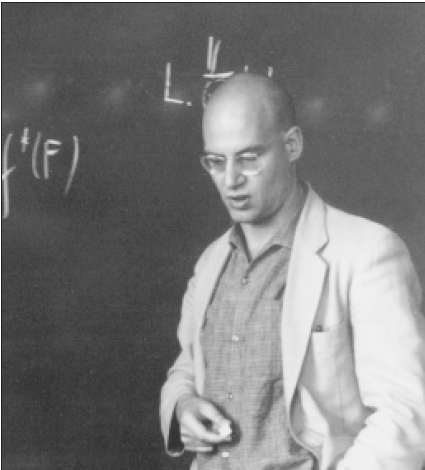
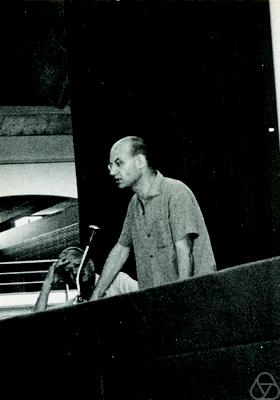
Alexander Grothendieck (28 March 1928 - 13 November 2014) was a mathematician and the central figure behind the creation of the modern theory of algebraic geometry. His research program vastly extended the scope of the field, incorporating major elements of commutative algebra, homological algebra, sheaf theory and category theory into its foundations. This new perspective led to revolutionary advances across many areas of pure mathematics.
Within algebraic geometry itself, his theory of schemes has become the universally accepted language for all further technical work. His generalization of the classical Riemann - Roch theorem launched the study of algebraic and topological K-theory. His construction of new cohomology theories has left deep consequences for algebraic number theory, algebraic topology, and representation theory. His creation of topos theory has had an impact on set theory and logic.
One of his most celebrated achievements is the discovery of the first arithmetic Weil cohomology theory: the ℓ-adic étale cohomology. This key result opened the way for a proof of the Weil conjectures, ultimately completed by his student Pierre Deligne. To this day, ℓ-adic cohomology remains a fundamental tool for number theorists, with important applications to the Langlands program.
Grothendieck’s way of thinking has influenced generations of mathematicians long after his departure from mathematics. His emphasis on the role of universal properties brought category theory into the mainstream as an important organizing principle. His notion of abelian category is now the basic object of study in homological algebra. His conjectural theory of motives has been a driving force behind modern developments in algebraic K-theory, motivic homotopy theory, and motivic integration.
Driven by deep personal and political convictions, Grothendieck left the Institut des Hautes Études Scientifiques, where he had been appointed professor and accomplished his greatest work, after a dispute over military funding in 1970. His mathematical activity essentially ceased after this, and he devoted his energies to political causes. He formally retired in 1988 and within a few years moved to the Pyrenees, where he lived in isolation from human society.
Alexander Grothendieck was born in Berlin to anarchist parents: a Ukrainian father from an ultimately Hassidic family, Alexander "Sascha" Shapiro aka Tanaroff, and a mother from a German Protestant family, Johanna "Hanka" Grothendieck; both of his parents had broken away from their early backgrounds in their teens. At the time of his birth Grothendieck's mother was married to Johannes Raddatz, a German journalist, and his birthname was initially recorded as Alexander Raddatz. The marriage was dissolved in 1929 and Shapiro/Tanaroff acknowledged his paternity, but never married Hanka Grothendieck.
Grothendieck lived with his parents until 1933 in Berlin. At the end of that year, Shapiro moved to Paris, and Hanka followed him the next year. They left Grothendieck in the care of Wilhelm Heydorn, a Lutheran Pastor and teacher in Hamburg where he went to school. During this time, his parents took part in the Spanish Civil War in supporting rather than fighting roles. Grothendieck spoke French, English and German.
In 1939 Grothendieck went to France and lived in various camps for displaced persons with his mother, first at the Camp de Rieucros, and subsequently lived for the remainder of the war in the village of Le Chambon - sur - Lignon, where he was sheltered and hidden in local boarding houses or pensions. His father was sent via Drancy to Auschwitz where he died in 1942. While Grothendieck lived in Chambon, he attended the Collège Cévenol (now known as the Le Collège - Lycée Cévenol International), a unique secondary school founded in 1938 by local Protestant pacifists and anti - war activists. Many of the refugee children being hidden in Chambon attended Cévenol and it was at this school that Grothendieck apparently first became fascinated with mathematics.
After the war, the young Grothendieck studied mathematics in France, initially at the University of Montpellier. After three years of increasingly independent studies there he got a scholarship to go to continue his studies in Paris in 1948.
Initially, Grothendieck attended Henri Cartan's Seminar at École Normale Supérieure, but lacked the necessary background to follow the high powered seminar. On the advice of Cartan and Weil, he moved to the University of Nancy where he wrote his dissertation under Laurent Schwartz in functional analysis, from 1950 to 1953. At this time he was a leading expert in the theory of topological vector spaces. By 1957, he set this subject aside in order to work in algebraic geometry and homological algebra.
Installed at the Institut des Hautes Études Scientifiques (IHÉS), Grothendieck attracted attention by an intense and highly productive activity of seminars (de facto working groups drafting into foundational work some of the ablest French and other mathematicians of the younger generation). Grothendieck himself practically ceased publication of papers through the conventional, learned journal route. He was, however, able to play a dominant role in mathematics for around a decade, gathering a strong school.
During this time he had officially as students Michel Demazure (who worked on SGA3, on group schemes), Luc Illusie (cotangent complex), Michel Raynaud, Jean - Louis Verdier (cofounder of the derived category theory) and Pierre Deligne. Collaborators on the SGA projects also included Mike Artin (étale cohomology) and Nick Katz (monodromy theory and Lefschetz pencils). Jean Giraud worked out torsor theory extensions of non-abelian cohomology. Many others were involved.
Alexander Grothendieck's work during the `Golden Age' period at IHÉS established several unifying themes in algebraic geometry, number theory, topology, category theory and complex analysis. His first (pre-IHÉS) breakthrough in algebraic geometry was the Grothendieck - Hirzebruch - Riemann - Roch theorem, a far reaching generalization of the Hirzebruch - Riemann - Roch theorem proved algebraically; in this context he also introduced K-theory. Then, following the program he outlined in his talk at the 1958 International Congress of Mathematicians, he introduced the theory of schemes, developing it in detail in his Éléments de géométrie algébrique (EGA) and providing the new more flexible and general foundations for algebraic geometry that has been adopted in the field since that time. He went on to introduce the étale cohomology theory of schemes, providing the key tools for proving the Weil conjectures, as well as crystalline cohomology and algebraic de Rham cohomology to complement it. Closely linked to these cohomology theories, he originated topos theory as a generalization of topology (relevant also in categorical logic). He also provided an algebraic definition of fundamental groups of schemes and more generally the main structures of a categorical Galois theory. As a framework for his coherent duality theory he also introduced derived categories, which were further developed by Verdier.
The results of work on these and other topics were published in the EGA and in less polished form in the notes of the Séminaire de géométrie algébrique (SGA) that he directed at IHES.
Grothendieck's political views were radical and pacifist. Thus he strongly opposed both United States aggression in Vietnam and Soviet military expansionism. He gave lectures on category theory in the forests surrounding Hanoi while the city was being bombed, to protest against the Vietnam War. He retired from scientific life around 1970, after having discovered the partly military funding of IHÉS. He returned to academia a few years later as a professor at the University of Montpellier, where he stayed until his retirement in 1988. His criticisms of the scientific community, and especially of several mathematics circles, are also contained in a letter, written in 1988, in which he states the reasons for his refusal of the Crafoord Prize. He declined the prize on ethical grounds in an open letter to the media.
While the issue of military funding was perhaps the most obvious explanation for Grothendieck's departure from IHÉS, those who knew him say that the causes of the rupture ran deeper. Pierre Cartier, a visiteur de longue durée ("long term guest") at the IHÉS, wrote a piece about Grothendieck for a special volume published on the occasion of the IHÉS's fortieth anniversary. The Grothendieck Festschrift was a three volume collection of research papers to mark his sixtieth birthday (falling in 1988), and published in 1990.
In it Cartier notes that, as the son of an anti - military anarchist and one who grew up among the disenfranchised, Grothendieck always had a deep compassion for the poor and the downtrodden. As Cartier puts it, Grothendieck came to find Bures - sur - Yvette "une cage dorée" ("a golden cage"). While Grothendieck was at the IHÉS, opposition to the Vietnam War was heating up, and Cartier suggests that this also reinforced Grothendieck's distaste at having become a mandarin of the scientific world. In addition, after several years at the IHÉS Grothendieck seemed to cast about for new intellectual interests. By the late 1960s he had started to become interested in scientific areas outside of mathematics. David Ruelle, a physicist who joined the IHÉS faculty in 1964, said that Grothendieck came to talk to him a few times about physics. (In the 1970s Ruelle and the Dutch mathematician Floris Takens produced a new model for turbulence, and it was Ruelle who invented the concept of a strange attractor in a dynamical system.) Biology interested Grothendieck much more than physics, and he organized some seminars on biological topics.
After leaving the IHÉS, Grothendieck became a temporary professor at Collège de France for two years. A permanent position became open at the end of his tenure, but the application Grothendieck submitted made it clear that he had no plans to continue his mathematical research. The position was given to Jacques Tits.
He then went to Université de Montpellier, where he became increasingly estranged from the mathematical community. Around this time, he founded a group called Survivre (To Survive), which was dedicated to anti - military and ecological issues. His mathematical career, for the most part, ended when he left the IHÉS. In 1984 he wrote a proposal to get a position through the Centre National de la Recherche Scientifique. The proposal, entitled Esquisse d'un Programme ("Program Sketch") describes new ideas for studying the moduli space of complex curves. Although Grothendieck himself never published his work in this area, the proposal became the inspiration for work by other mathematicians and the source of the theory of dessins d'enfants. Esquisse d’un Programme was published in the two volume proceedings Geometric Galois Actions.
While not publishing mathematical research in conventional ways during the 1980s, he produced several influential manuscripts with limited distribution, with both mathematical and biographical content. During that period he also released his work on Bertini type theorems contained in EGA 5, published by the Grothendieck Circle in 2004.
La Longue Marche à travers la théorie de Galois [The Long March Through Galois Theory] is an approximately 1600 page handwritten manuscript produced by Grothendieck during the years 1980 - 1981, containing many of the ideas leading to the Esquisse d'un programme, and in particular studying the Teichmüller theory.
In 1983 he wrote an extended manuscript (about 600 pages) entitled Pursuing Stacks, stimulated by correspondence with Ronald Brown, (R.Brown and Tim Porter at University of Bangor in Wales), and starting with a letter addressed to Daniel Quillen. This letter and successive parts were distributed from Bangor: in an informal manner, as a kind of diary, Grothendieck explained and developed his ideas on the relationship between algebraic homotopy theory and algebraic geometry and prospects for a noncommutative theory of stacks. The manuscript, which is being edited for publication by G. Maltsiniotis, later led to another of his monumental works, Les Dérivateurs. Written in 1991, this latter opus of about 2000 pages further developed the homotopical ideas begun in Pursuing Stacks. Much of this work anticipated the subsequent development of the motivic homotopy theory of Fabien Morel and V. Voevodsky in the mid 1990s.
His Esquisse d'un programme (1984) is a proposal for a position at the Centre National de la Recherche Scientifique, which he held from 1984 to his retirement in 1988. Ideas from it have proved influential, and have been developed by others, in particular dessins d'enfants and a new field emerging as anabelian geometry. In La Clef des Songes he explains how considering the source of dreams led him to conclude that God exists.
The 1000 page autobiographical manuscript Récoltes et semailles (1986) is now available on the internet in the French original, and an English translation is underway (these parts of Récoltes et semailles have already been translated into Russian and published in Moscow). Some parts of Récoltes et semailles and the whole La Clef des Songes have been translated into Spanish and Russian.
Grothendieck was co-awarded (but declined) the Crafoord Prize with Pierre Deligne in 1988.
In 1991, Grothendieck moved to an address he did not provide to his previous contacts in the mathematical community. He was later rumored to live in southern France or Andorra and to be reclusive.
In January 2010, Grothendieck wrote a letter to Luc Illusie. In this "Déclaration d'intention de non-publication", he stated that essentially all materials that had been published in his absence were done without his permission. He asked that none of his work should be reproduced in whole or in part, and even further that libraries containing such copies of his work remove them.
Grothendieck's early mathematical work was in functional analysis. Between 1949 and 1953 he worked on his doctoral thesis in this subject at Nancy, supervised by Jean Dieudonné and Laurent Schwartz. His key contributions include topological tensor products of topological vector spaces, the theory of nuclear spaces as foundational for Schwartz distributions, and the application of Lp spaces in studying linear maps between topological vector spaces. In a few years, he had turned himself into a leading authority on this area of functional analysis — to the extent that Dieudonné compares his impact in this field to that of Banach.
It is, however, in algebraic geometry and related fields where Grothendieck did his most important and influential work. From about 1955 he started to work on sheaf theory and homological algebra, producing the influential "Tôhoku paper" (Sur quelques points d'algèbre homologique, published in 1957) where he introduced Abelian categories and applied their theory to show that sheaf cohomology can be defined as certain derived functors in this context.
Homological methods and sheaf theory had already been introduced in algebraic geometry by Jean - Pierre Serre and others, after sheaves had been defined by Jean Leray. Grothendieck took them to a higher level of abstraction and turned them into a key organizing principle of his theory. He shifted attention from the study of individual varieties to the relative point of view (pairs of varieties related by a morphism), allowing a broad generalization of many classical theorems. The first major application was the relative version of Serre's theorem showing that the cohomology of a coherent sheaf on a complete variety is finite dimensional; Grothendieck's theorem shows that the higher direct images of coherent sheaves under a proper map are coherent; this reduces to Serre's theorem over a one point space.
In 1956, he applied the same thinking to the Riemann - Roch theorem, which had already recently been generalized to any dimension by Hirzebruch. The Grothendieck - Riemann - Roch theorem was announced by Grothendieck at the initial Mathematische Arbeitstagung in Bonn, in 1957. It appeared in print in a paper written by Armand Borel with Serre. This result was his first major achievement in algebraic geometry. He went on to plan and execute a major foundational program for rebuilding the foundations of algebraic geometry, which were then in a state of flux and under discussion in Claude Chevalley's seminar; he outlined his program in his talk at the 1958 International Congress of Mathematicians.
His foundational work on algebraic geometry is at a higher level of abstraction than all prior versions. He adapted the use of non-closed generic points, which led to the theory of schemes. He also pioneered the systematic use of nilpotents. As 'functions' these can take only the value 0, but they carry infinitesimal information, in purely algebraic settings. His theory of schemes has become established as the best universal foundation for this major field, because of its great expressive power as well as technical depth. In that setting one can use birational geometry, techniques from number theory, Galois theory and commutative algebra, and close analogues of the methods of algebraic topology, all in an integrated way.
He is also noted for his mastery of abstract approaches to mathematics and his perfectionism in matters of formulation and presentation. Relatively little of his work after 1960 was published by the conventional route of the learned journal, circulating initially in duplicated volumes of seminar notes; his influence was to a considerable extent personal. His influence spilled over into many other branches of mathematics, for example the contemporary theory of D-modules. (It also provoked adverse reactions, with many mathematicians seeking out more concrete areas and problems.)
The bulk of Grothendieck's published work is collected in the monumental, and yet incomplete, Éléments de géométrie algébrique (EGA) and Séminaire de géométrie algébrique (SGA). The collection Fondements de la Géometrie Algébrique (FGA), which gathers together talks given in the Séminaire Bourbaki, also contains important material.
Perhaps Grothendieck's deepest single accomplishment is the invention of the étale and l-adic cohomology theories, which explain an observation of André Weil's that there is a deep connection between the topological characteristics of a variety and its diophantine (number theoretic) properties. For example, the number of solutions of an equation over a finite field reflects the topological nature of its solutions over the complex numbers. Weil realized that to prove such a connection one needed a new cohomology theory, but neither he nor any other expert saw how to do this until such a theory was found by Grothendieck.
This program culminated in the proofs of the Weil conjectures, the last of which was settled by Grothendieck's student Pierre Deligne in the early 1970s after Grothendieck had largely withdrawn from mathematics.
He wrote a retrospective assessment of his mathematical work. As his main mathematical achievements ("maître-thèmes"), he chose this collection of 12 topics (his chronological order):
- Topological tensor products and nuclear spaces
- "Continuous" and "discrete" duality (derived categories and "six operations").
- Yoga of the Grothendieck - Riemann - Roch theorem (K-theory, relation with intersection theory).
- Schemes.
- Topoi.
- Étale cohomology including l-adic cohomology.
- Motives and the motivic Galois group (and Grothendieck categories)
- Crystals and crystalline cohomology, yoga of De Rham and Hodge coefficients.
- Topological algebra, infinity-stacks, 'dérivateurs', cohomological formalism of toposes as an inspiration for a new homotopic algebra
- Tame topology.
- Yoga of anabelian geometry and Galois - Teichmüller theory.
- Schematic point of view, or "arithmetics" for regular polyhedra and regular configurations of all sorts.
He wrote that the central theme of the topics above is that of topos theory, while the first and last were of the least importance to him.
Here the term yoga denotes a kind of "meta-theory" that can be used heuristically; Michel Raynaud writes the other terms "Ariadne's thread" and "philosophy" as effective equivalents.
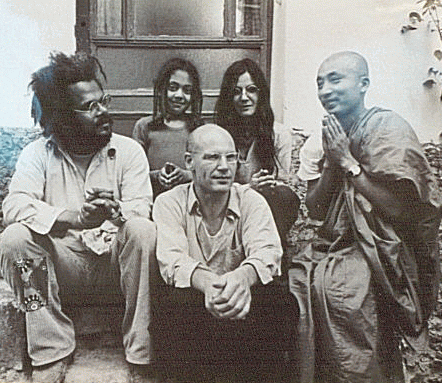
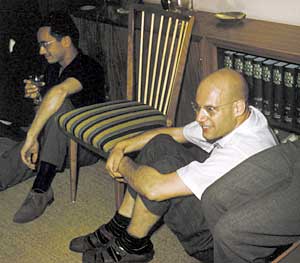
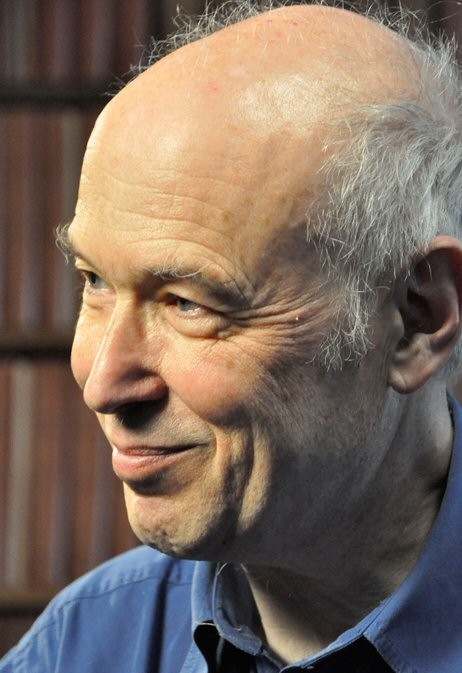
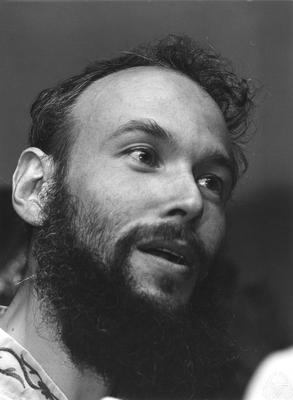
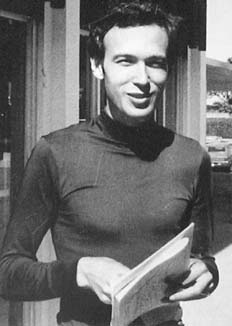
Pierre René, Viscount Deligne (3 October 1944) is a highly influential Belgian mathematician. He is known for work on the Weil conjectures, leading finally to a complete proof in 1973.
He was born in Etterbeek, attended school at Athénée Adolphe Max and studied at the Universite Libre de Bruxelles (ULB).
After completing a doctorate under the supervision of Alexander Grothendieck, he worked with him at the Institut des Hautes Études Scientifiques (IHÉS) near Paris, initially on the generalization within scheme theory of Zariski's main theorem. In 1968, he also worked with Jean - Pierre Serre; their work led to important results on the l-adic representations attached to modular forms, and the conjectural functional equations of L-functions. Deligne's also focused on topics in Hodge theory. He introduced weights and tested them on objects in complex geometry. He also collaborated with David Mumford on a new description of the moduli spaces for curves. Their work came be seen as an introduction to one form of the theory of algebraic stacks, and recently has been applied to questions arising from string theory. Perhaps Deligne's most famous contribution was his proof of the third and last of the Weil conjectures. This proof completed a program initiated and largely developed by Alexander Grothendieck. As a corollary he proved the celebrated Ramanujan - Petersson conjecture for modular forms of weight greater than one; weight one was proved in his work with Serre. Deligne's paper (1974) contains the first proof of the Weil conjectures, Deligne's contribution being to supply the estimate of the eigenvalues of Frobenius, considered the geometric analogue of the Riemann Hypothesis.
From 1970 until 1984, when he moved to the Institute for Advanced Study in Princeton, Deligne was a permanent member of the IHÉS staff. During this time he did much important work outside of his work on algebraic geometry. In joint work with George Lusztig, Deligne and Lusztig applied étale cohomology to construct representations of finite groups of Lie type; with Michael Rapoport, Deligne worked on the moduli spaces from the 'fine' arithmetic point of view, with application to modular forms. He received a Fields Medal in 1978.
In terms of the completion of some of the underlying
Grothendieck program of research, he defined absolute
Hodge cycles, as a surrogate for the missing and still
largely conjectural theory of motives.
This idea allows one to get around the lack of knowledge
of the Hodge conjecture, for some applications. He
reworked the tannakian category theory in his paper for
the Grothendieck Festschrift, employing Beck's
theorem – the Tannakian category concept being the
categorical expression of the linearity of the theory of
motives as the ultimate Weil cohomology. All this is part
of the yoga of weights, uniting Hodge theory and
the l-adic Galois representations. The Shimura variety
theory is related, by the idea that such varieties should
parametrize not just good (arithmetically interesting)
families of Hodge structures, but actual motives.
He was awarded the Fields Medal in 1978, the Crafoord Prize in 1988, the Balzan Prize in 2004 and the Wolf Prize in 2008.
In 2006 he was ennobled by the Belgian king as viscount.
In 2009, Deligne was elected a foreign member of the Royal Swedish Academy of Sciences.